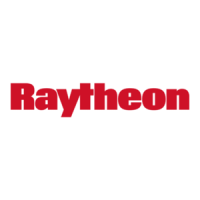E%fPORTANTNOTE
Auto gain is useful for cruising out to the fishing grounds to track the
bottom echo. Occasionally Auto Gain operation may become unreliable
due to abnormal bottom conditions or turbulence.
ManualGain
operation
is always recommended for best fish detection and for more stable perform-
ance whenever these conditions are encountered.
33.18
Setting the STC
The
V8010
includes two other variable controls
labeled STC A and STC B. These controls are
used to controland reduce the amount of (shallow
DUCES
CLUl-rER
water) clutter and noise by
decreasing
the nearby
.::
:i::
:
25-
gain
or sensitivity. The STC controls are used to
‘,‘I’,:.’
’
improve bottom depth tracking in turbulent
waterand
assure fish detection in shallow water.
Ll
I
$.
1
-
.
.
*
’
,
,,A
-’
i.
.,
h
._
:
.
To reduce the surface noise echoes, rotate the STC A control
clockwise
(if you are using the 200 Khz frequency) or STC B (if using 50 or 28Khz)
for steady bottom tracking while cruising. Only use the amount of suppres-
sion or gain reduction necessary for obtaining the clearest picture without
effecting or cancelling the bottom echo.
For better sensitivity for fish detection in shallow water rotate the appro-
priate control STC A
(2OOKhz)
or STC B
(5OKhz)
counterclockwise to
increase the nearby gain to the desired sensitivity level.
33.l9
Controlling the Chart Speed
Ocassionally the marks from individual fish may print
I
as small dots or slash marks on the screen and be more
difficult to see. This effect may be attributed to sev-
eral factors, but by increasing the chart speed, those
echoes can become more prominently displayed on
the screen. The chart speed can be varied in 10 dif-
ferent steps. The speeds range from 1 (slowest) to 9
(fastest). Speed
‘0”
stops or ‘freezes” the display.
To vary the chart speed, press
the-1
key. A
temporarymenu willappearlabled
?XI.~RTX".
Press
the
t
(down) key to reduce the chart speed. This
compacts the picture and lets you see more of the
bottom contour history. Press
them
key and
OPERATION 53
I
I

